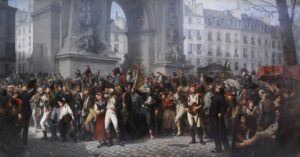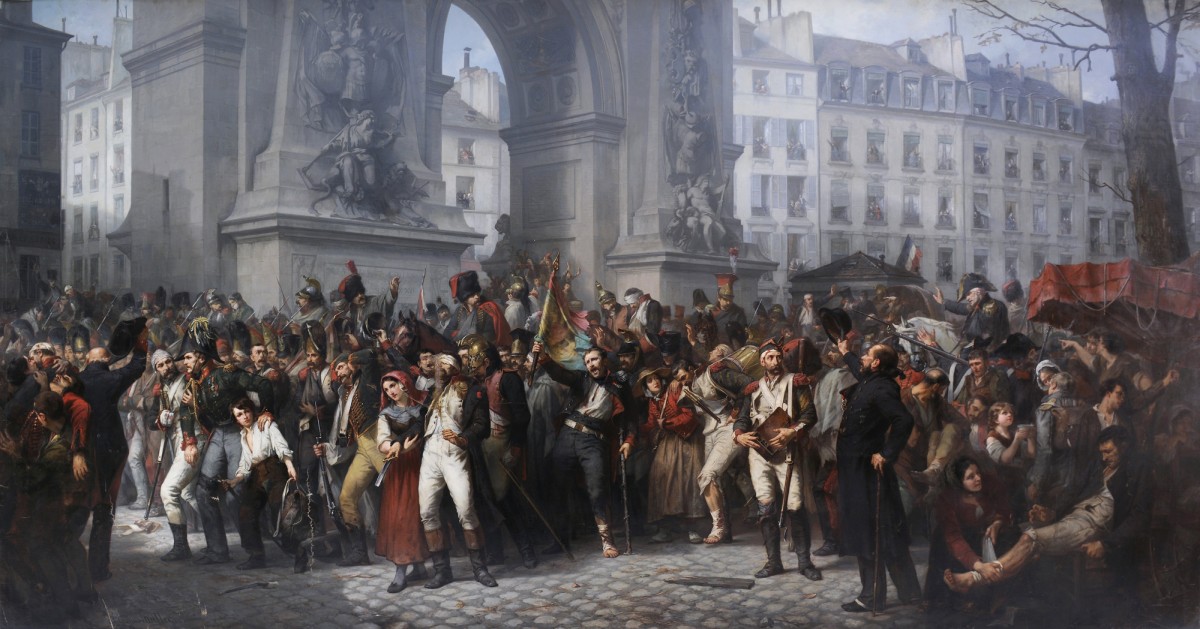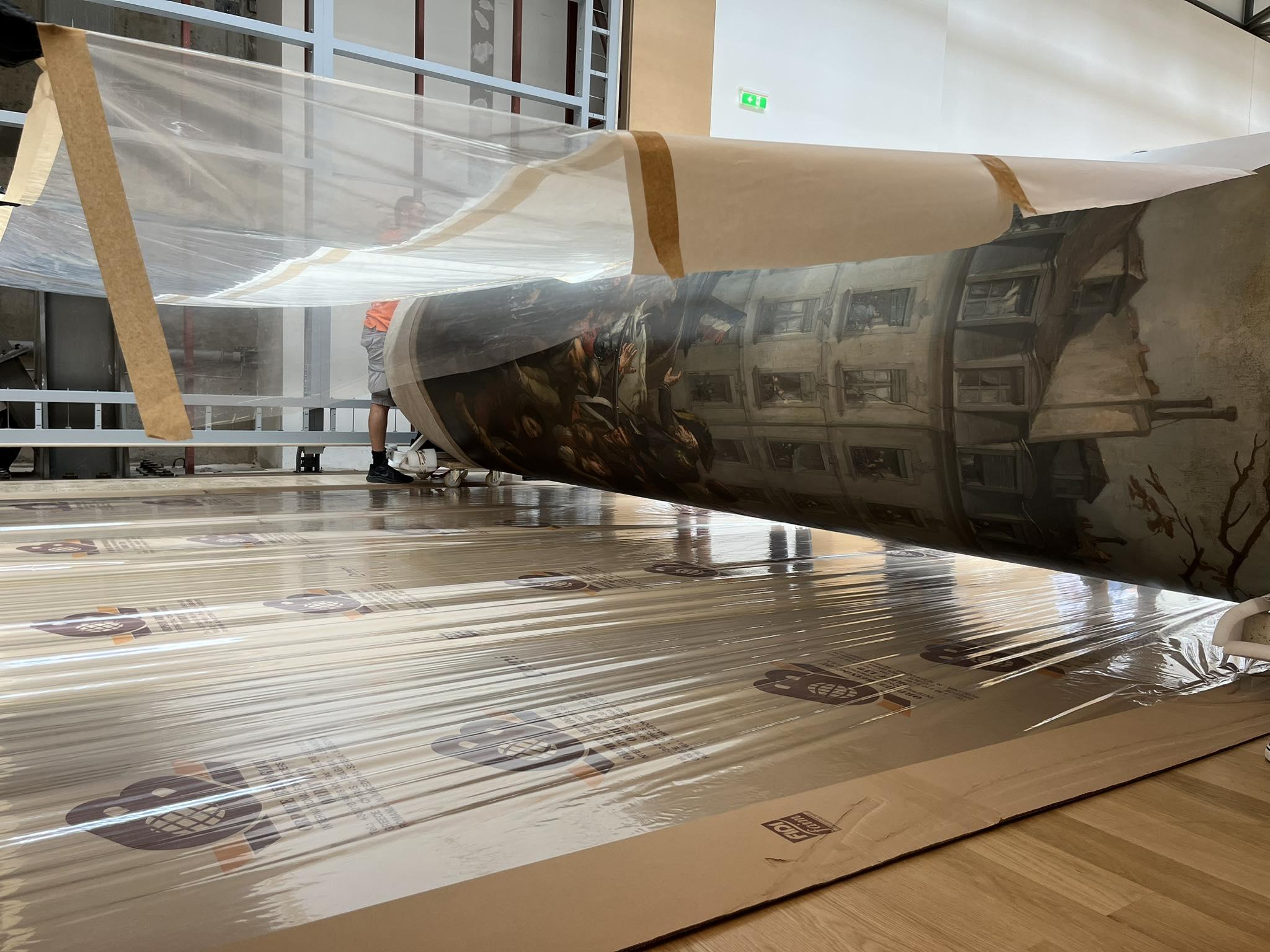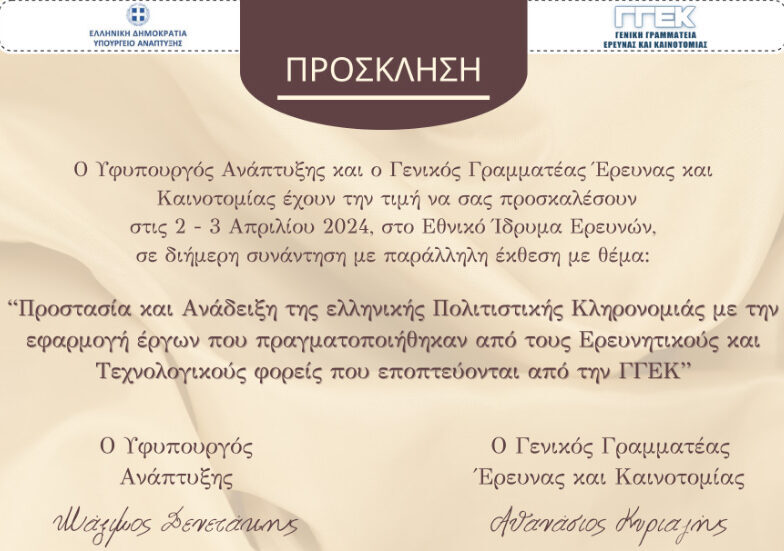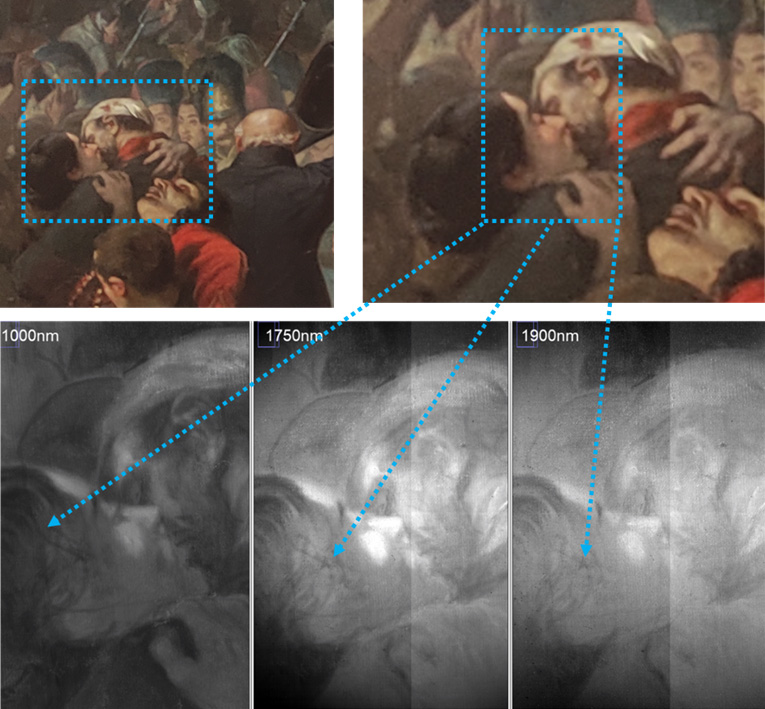Charles-Louis Muller (1815-1892), “30th March 1814”, 1855, oil on canvas, 445 x 845 cm.
The work by Charles Louis Muller, measuring 4.40 x 8.40 m, entitled “30 March 1814”, belongs to the Western European collection of the National Gallery. In 1855, the work was exhibited at the Paris International Exhibition, where it won first prize. It then passed through various private collections and in 1913 the Egyptian Alexander Kitroev donated it to the National Gallery. Until 1987 the work was exhibited in the permanent exhibition of Western European painting at the National Gallery. However, an accident caused a large tear in the work, some salvage operations were then carried out, but since then the work was wrapped in a cylinder, transported and kept in the National Gallery’s warehouses.
In October 2010, with the help of a specialized transport crew, the work was moved and unpacked at the National Gallery for a single day, where the conservators of the OPMAS were able to view the work, record its state of preservation and begin to study its needs and how to preserve it. In 2020, the PROTEAS project was launched with the aim, among other things, of researching and conserving this project.
In this table, both the non-destructive imaging and analytical techniques developed in the framework of the PROTEAS project and the established analytical techniques of a sampling nature that the maintenance department of EPMAS applies in the studies carried out in its laboratories were applied. In particular, the following techniques were used: a) Imaging X-ray Fluorescence Spectroscopy, and b) Ultrasonic Reflectography. Finally, micro-sampling was also carried out in this project in order to study the project with FTIR Infrared Spectroscopy. In addition, samples were taken by Optical Microscopy from various points of the painted surface of the work.
State of conservation of the project
The work has suffered severe deformation of the canvas and loss of its mechanical properties. The work was not mounted in a crate, but for many years it was kept in the warehouses of EPMAS, wrapped in a cylinder.
The fabric of the work was oxidized, had tears, holes at the edges (from the nails that were rolled), local reinforcements (patches). A thin layer of preparation probably covered the entire surface of the work.
There are cracks, losses and in some places strong cracking in the painting layer. Heavily oxidized varnish covered the painted surface and incomplete aesthetic restoration treatments and painting were present in many places across the surface of the work.
On the subject of the project
30 March 1814. The troops of Prussia, Austria and Russia arrived on the outskirts of Paris, and Napoleon, despite repeated defeats, was sending victorious messages to Paris. Even on 28 March, the Journal de L’Empire spoke of the victories of the French troops at Chaumont. Thus, when the allies arrived on the outskirts of Paris, the French, surprised and stunned by the events, ran to defend their city. The painting depicts the moment when a bizarre hodgepodge of wounded, elderly, children, women, prisoners of war, ordinary civilians, etc., gathered at the Arch of Saint-Denis, an iconic site in the French capital, in a desperate and desperate attempt to defend their city. The next day, 31 March 1814, the Allied forces entered Paris. Like Theodoros Vryzakis’ almost contemporaneous work The Exodus of Mesolonghi (1853), Muller’s work (1855) celebrates ordinary people collectively fighting to the death for the right to Freedom.
